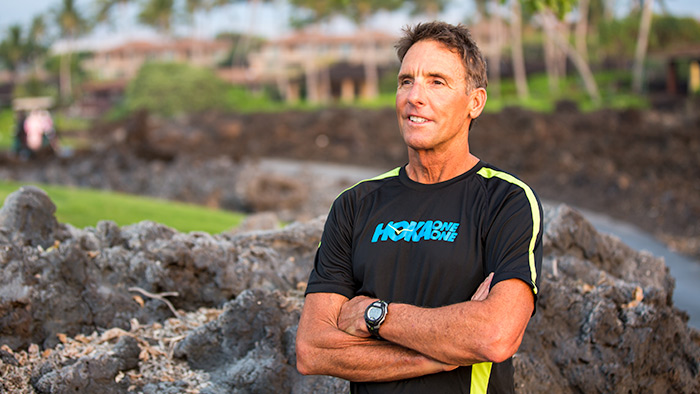Most people have limited training time due to their job, family or otherwise hectic lives. Nonetheless, it’s still feasible to train effectively and be ready to race an Ironman very well come the season. And even with only 10 hours allocated for training per week, you can use my framework here to wring the most value out of your efforts. Simply apply these recommendations to your own schedule, and you’ll be amazed at what you can achieve!
- How to train for your first Ironman
- How to race your first Ironman
- How much swimming should triathletes do?
- Free Ironman training plans
Total Sessions
I recommend including three sessions in each of the three disciplines per week. That means you’ll log nine total weekly sessions, including three swims, three bikes and three runs. Obviously there will be some days that require double sessions, but these workouts are relatively short and efficient, so squeezing them into your schedule should be manageable. For maximum effectiveness, you’ll divide your training time between the swim, bike and run as follows:
Swim: 2.5hrs total per week spread over three sessions
Bike: 3.5hrs total per week spread over three sessions
Run: 2.5hrs total per week spread over three sessions.
Strength Training
I also recommend that you add four sessions per week of strength and mobility training. Often overlooked or neglected, strength and mobility work fortifies your programme by building speed and power, and helping you avoid injury. Sessions need only be 15-18mins each, for a total of 1hr/week.
Read more strength training advice and sessions
HIIT Intervals
The off-season is not an excuse to grind through endless ‘base miles’ at a slow aerobic pace.
In fact, it’s the ‘High Intensity Interval Training’ (HIIT) – inserted into your swim, bike and run workouts – that will serve as your ‘secret weapons’ during the off-season.
For now, these HIIT segments will be very short in length. I recommend varying your HIIT intervals from 20secs to 2mins in length, and include a few of these in otherwise long and steady aerobic sessions. You can eventually build up to 5min intervals, but don’t overdo it. Think of these HIIT segments as the ‘spice’ to otherwise bland and steady workouts!
So how much HIIT should you include in each discipline per week? Well here’s the most essential aspect to your training: Add HIIT sessions across your swim, bike and run sessions 2 to 3 times per week. Don’t be like most athletes who loaf through their off-season workouts! If you want to improve your fitness and overall speed, it’s important to inject modest amounts of high intensity now; you’ll reap the rewards in the spring and summer. Here’s my HITT recipe for optimal off-season training:
Swim: Include 40% of your total time per week as HIIT. So if you’re swimming 2.5hrs per week, then you’ll be performing 60mins of total HIIT intervals per week. E.g.: Do 4 x 75m hard on 1:15mins rest. That counts for about 5mins of your weekly HIIT in the pool.
Bike: Allocate 30% of your training time on the bike to HIIT intervals. So, out of 3.5hrs of weekly cycling, you should be doing 70mins of HIIT. Again, these intervals can be distributed across 2 or 3 days of weekly riding. Remember to keep the intervals short. It’s not wise to overcook 4 x 5mins hard right now; instead try 20secs up to 2mins for each of your segments. This will produce the desired results later in the year and will help you avoid doing too much too soon now.
Run: Include just 20% of your total weekly running time as HIIT intervals. With 2.5hrs of weekly running scheduled, about 30mins of it would be in faster HIIT intervals. Don’t forget that hill training and hill repeats – on the run or the bike – count towards your weekly HIIT total.
Most importantly, in all aspects of HIIT, make sure you give yourself enough rest after each effort to allow for adequate (but not complete) recovery, and to ensure that proper form and biomechanics are maintained.
If you have further questions, visit my website www.davescottinc.com or message me on Facebook.
Dave Scott is the first 6x IRONMAN World Champion and a Master Coach of IRONMAN U. As the founder of the Dave Scott Multisport Institute, he dedicates himself to making triathletes of all levels faster and more efficient.
More by Dave Scott
